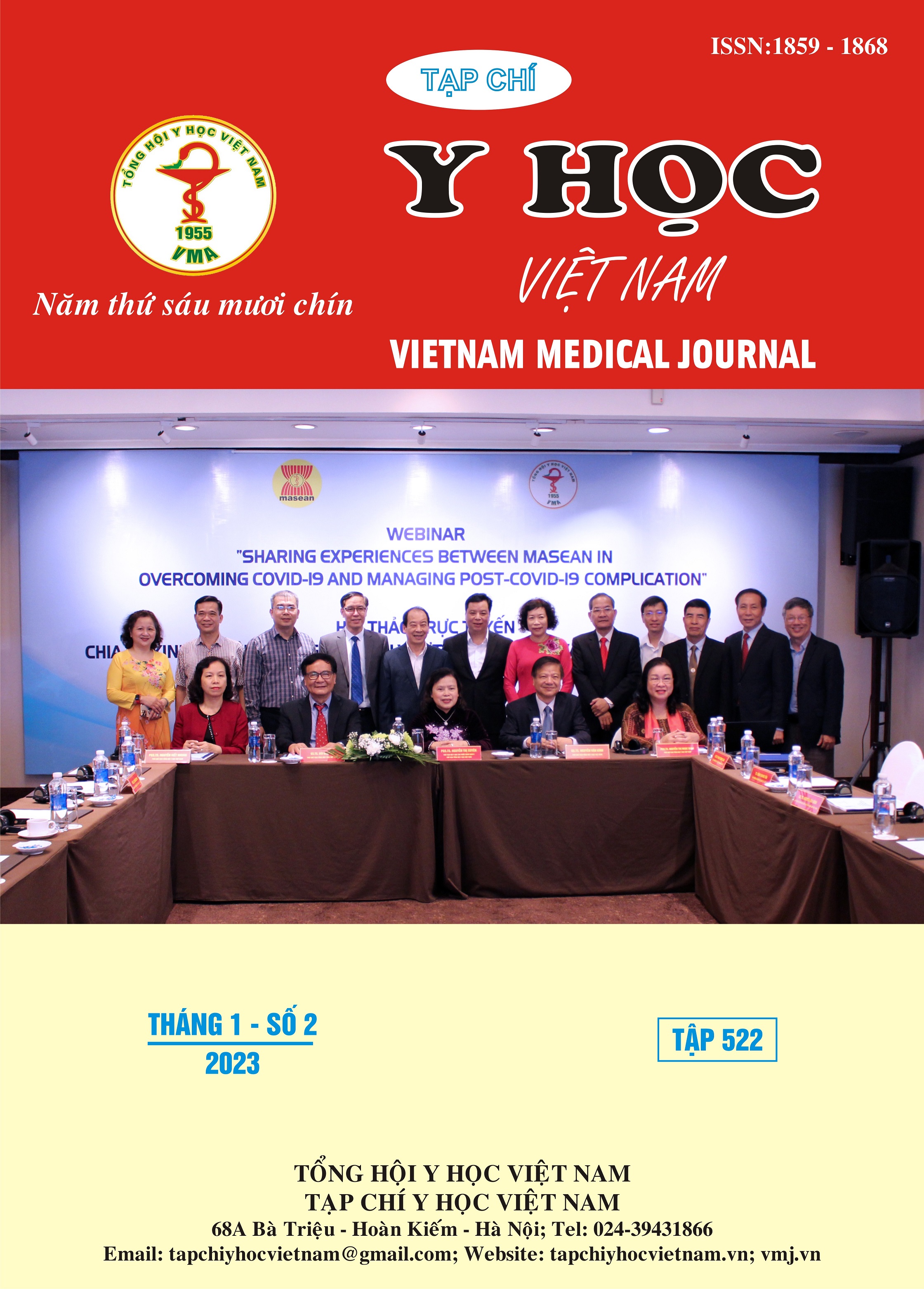EVALUATION OF MICROSURGERY RESULTS OF EYEBROW KEYHOLE APPROACH FOR ANTERIOR CRANIAL BASE TUMORS
Main Article Content
Abstract
Objective: Evaluation of microsurgery results of eyebrow keyhole approach for anterior cranial base tumors. Methods: An interventional study based on 65 patients with anterior cranial base tumors. All patients were diagnosed and treated at Viet Duc Hospital from 1/2017 to 12/2020. Patients are selected with the following criteria: the investigator directly examines, reads computed tomography and magnetic resonance, participates in surgery and post-operative treatment, follow-up and postoperative evaluation with postoperative magnetic resonance imaging. Results: A total of 65 patients were treated, including 49 females and 16 males. There were 33 cases of meningioma, 14 Rathke cysts, 8 pituitary tumors, 8 craniopharyngiomas, 1 arachnoid cyst and 1 dermoid cyst. The youngest age was 5 and the highest was 76. History of previous tumor treatment in 8 patients (6 surgery and 2 radiosurgery) and history of chronic disease in 32.3%. The duration from first symptoms to surgery ranges from 1-10 years. The most common symptoms were headache (96.9%), blurred vision (67.7%), hemianopia in the left eye (43.1%) and hemianopia in the right eye (41.5%). All patients underwent magnetic resonance imaging, 51 patients with tumor size £ 3cm; and 14 cases >3cm. One case of tumor recurrence after 1 year, 1 osteomyelitis, 1 wound infection. Postoperative hypopituitarism 9 patients, 6 patients after 6 months and 3 patients after 12 months. Assessment according to the Vancouver Scar Scale: excellent 89.7%; good 6.9%; moderate 1.7% and minimum 1.7%. The results of bone healing were good and moderate in 96.6% and poor healing in 3.4%. Results after 1 year: 81% fully recovered. Conclusion: The eyebrow keyhole approach is an effective surgery, the rate of gross total resection and subtotal resection is over 90% for all types of tumors. The rate of complications, morbidity and mortality are low.
Article Details
Keywords
anterior skull base tumor, eyebrow keyhole surgery
References
2. Nangarwal B et al (2022), Anterior skull base meningioma: surgical approach and complication avoidance, J Neurol Surg B Skull Base, DOI.10.1055/a-1733-9320.
3. Peng Y et al (2016), The supraorbital keyhole approach to the suprasellar and supra-intrasellar Rathke cleft cyst under pure endoscopic visualization, World Neurosurg, 92, 120-125.
4. Fan M et al (2013), Individualized surgical strategies for Rathke cleft cyst based on cyst location, J Neurosurg, 119, 6, 1437-1446
5. Patankar A et al (2022), An entirely suprasellar Rathke’s cleft cyst: a rare case report with review of literature, Egyptian Journal of Neurosurgery, 37, 21, 1-10
6. Grewal M R et al (2020), Gross total versus subtotal surgical resection in the management of craniopharyngioma, Allergy and Rhinology, Volume 11: 1-6. Journals.sagepub.com/home/aar. DOI: 10.1177/2152567-2096-4158
7. Mortazavi M et al (2016), Planum sphenoidale and tuberculum sellae meningiomas: operative nuances of a modern surgical technique with outcome and proposal of a new classification system, Worl Neurosurg, 86, 270-286.
8. King J A J et al (2016), Craniopharyngioma, Chapter 135, Neurosurgery, Springer Edition, 15-25.


